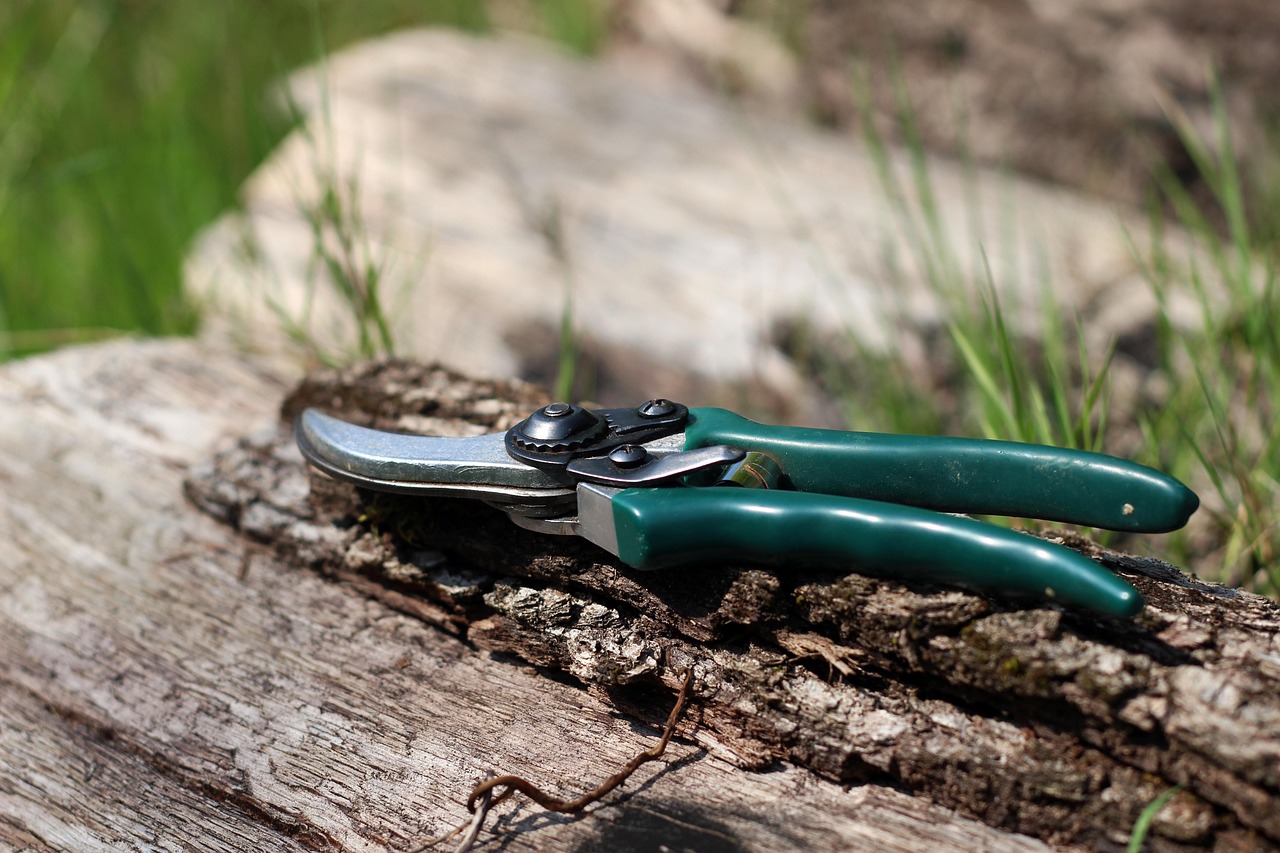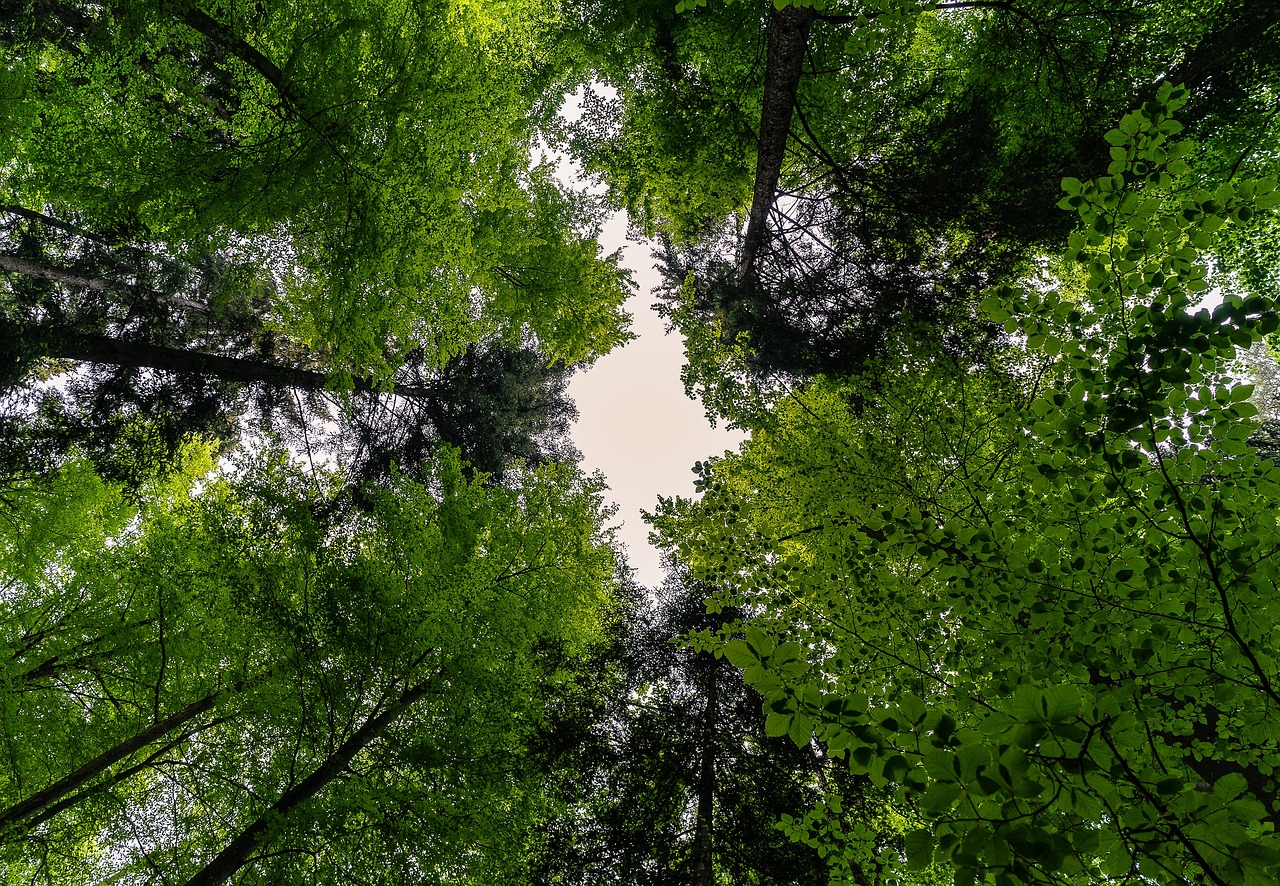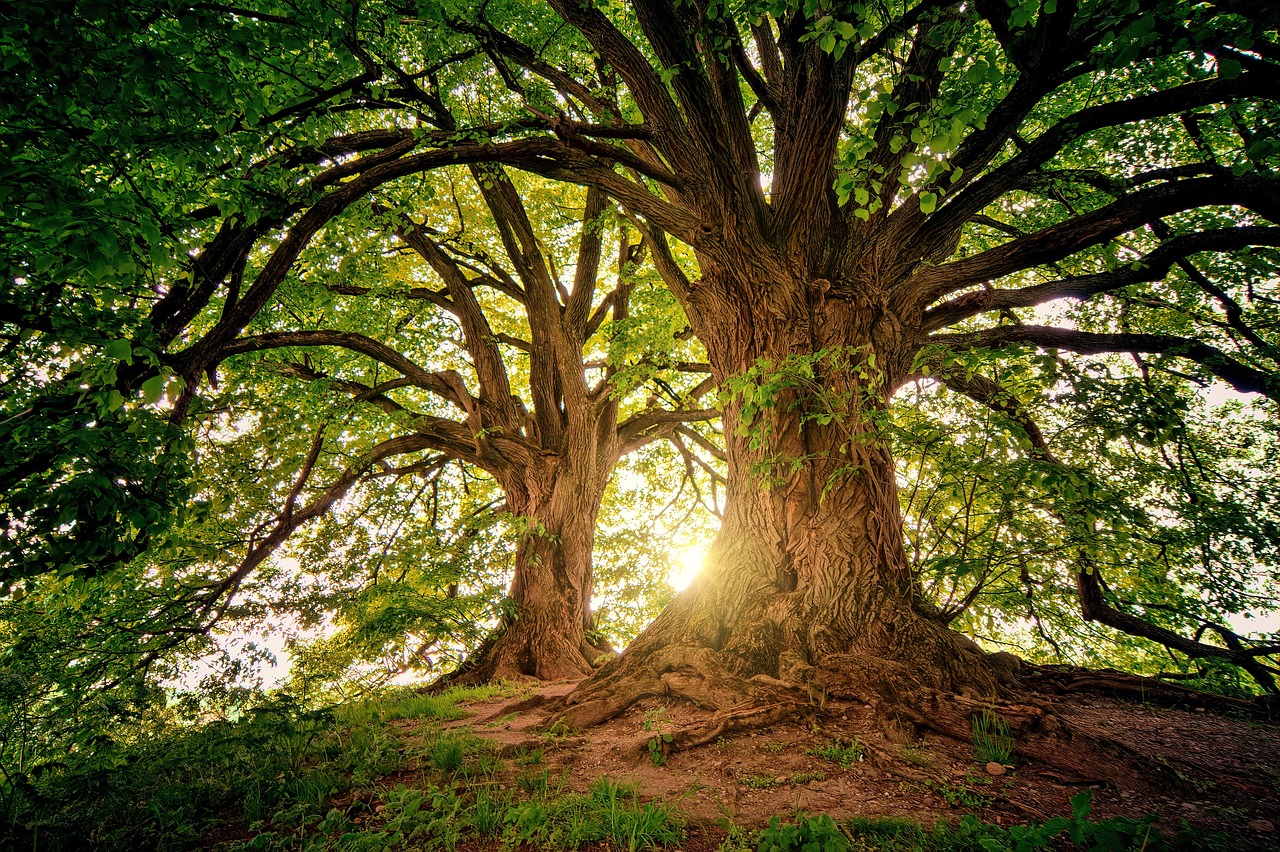Advanced pruning techniques, such as selective thinning and crown reduction, can effectively create windows in a tree canopy. This process involves removing specific branches to enhance light penetration and air circulation, promoting healthier growth. Careful planning and execution are essential to maintain the tree's structural integrity and aesthetic appeal while achieving the desired canopy openings.
Advanced pruning techniques are essential for creating windows in a canopy. These methods enhance light penetration, improve airflow, and reduce disease risk in trees and shrubs. By carefully selecting branches to remove, one can manipulate the canopy structure while promoting healthy growth.
Pruning is an art and science. It involves understanding the biology of plants, their growth habits, and how they respond to cutting. Advanced pruning techniques go beyond simple trimming. They require knowledge of tree structure, light requirements, and environmental factors. Creating windows in a canopy allows for better light distribution. This is crucial for lower foliage and understory plants, which often struggle in shaded environments.

A window in a canopy is an intentional opening created by removing specific branches or limbs. This process allows sunlight to reach the lower parts of the plant and the ground below. Additionally, these openings help improve air circulation, which can significantly reduce the likelihood of fungal diseases that thrive in damp, shaded areas.
Understanding Canopy Structure
The canopy of a tree is made up of leaves and branches that form the upper layer. This layer plays a vital role in photosynthesis, energy production, and ecosystem health. Understanding the structure of the canopy is essential for effective pruning. Each tree species has its unique growth pattern and branching structure.
Some trees have a dense canopy that blocks light from reaching the lower levels, while others may have a more open structure. Here are some key points regarding canopy structure:

- Layers: Canopies often consist of multiple layers, including the upper, middle, and lower layers.
- Branching Patterns: Different species exhibit various branching patterns that can affect light penetration.
- Growth Habit: Trees may grow upright or spread out significantly, influencing how much sunlight reaches the ground.
When planning to create windows in a canopy, it is essential to analyze the tree’s structure first. Understanding how light interacts with the canopy will inform which branches to prune and how much to remove. This ensures that the tree remains healthy while achieving the desired outcome.
The Importance of Light Penetration
Light is a crucial component for plant growth. In dense canopies, lower leaves may become shaded and begin to die off due to insufficient sunlight. This can lead to an unbalanced tree structure and hinder overall health. Creating windows in the canopy helps alleviate these issues by allowing more light to penetrate.
Here are some benefits of improved light penetration:

- Enhanced Photosynthesis: More light enables better photosynthesis in lower foliage.
- Increased Growth: Plants receiving adequate sunlight grow more vigorously.
- Reduced Disease Risk: Improved airflow reduces humidity levels around leaves, decreasing disease susceptibility.
Techniques for Advanced Pruning
Several techniques can be used for advanced pruning when creating windows in a canopy. Each method requires careful consideration of branch selection and cutting techniques to avoid damaging the plant. Below are some commonly used techniques:
- Crown Thinning: Removing selected branches throughout the crown to improve light penetration and airflow.
- Crown Raising: Removing lower branches to elevate the canopy and create openings below.
- Crown Reduction: Reducing the overall size of the canopy by shortening branches, which also allows light to filter through.
Each technique serves a specific purpose and should be chosen based on the needs of the tree and surrounding environment. For example, crown thinning may be best for trees with thick foliage that blocks light, while crown raising may benefit trees that overshadow understory plants.
Considerations for Pruning
Before undertaking advanced pruning, several factors should be considered. These include:

- Tree Species: Different species have varying growth rates and responses to pruning.
- Season: The best time to prune often depends on the species and local climate conditions.
- Health of the Tree: Assessing the tree’s overall health is crucial before making cuts.
- Safety Precautions: Always consider safety when using tools or working at heights.
A well-planned approach to advanced pruning not only enhances the appearance of the tree but also promotes its health. By creating windows in a canopy, you contribute positively to the ecosystem, allowing light to stimulate growth both above and below the canopy.
Tools for Advanced Pruning
Utilizing the right tools is essential for effective pruning. Here are some common tools used in advanced pruning:
- Hand Pruners: Ideal for small branches and precise cuts.
- Loppers: Useful for cutting larger branches without needing a saw.
- Saws: For thicker branches, a pruning saw or chainsaw may be necessary.
- Pole Pruners: Extendable tools that allow pruning high branches safely from the ground.
Each tool has its specific use case, making it important to choose wisely based on the task at hand. Proper maintenance of these tools also ensures clean cuts that promote faster healing for the tree.
Timing Your Pruning
Choosing the right time to prune is crucial for the health of the tree and the effectiveness of the pruning process. Different species have distinct growth cycles. Understanding these cycles will help you determine when to make cuts to promote optimal growth and health.
Seasonal Considerations
Pruning at the appropriate season can significantly influence the outcome of your efforts. Here are some seasonal guidelines:
- Winter: Late winter is often considered the best time for pruning many deciduous trees. During this dormant season, trees are less stressed, and the risk of disease is lower.
- Spring: Early spring is ideal for species that bloom later in the season. Pruning should be done just before new growth starts to encourage robust flowering.
- Summer: Summer pruning can be beneficial for controlling growth and shaping trees. It allows you to see the tree’s structure and make informed decisions.
- Fall: Generally, fall is not recommended for pruning as it can stimulate new growth that may not survive winter conditions.
Species-Specific Timing
Different species respond uniquely to pruning at various times. Some general guidelines include:
- Maples: Best pruned in late winter or early spring before sap starts to flow.
- Fruit Trees: Typically pruned in late winter to early spring to encourage fruit production.
- Pines: May be pruned in late spring after new growth has emerged.
- Flowering Trees: Those that bloom in spring should be pruned right after blooming to avoid cutting off potential flowers for the next season.
The Pruning Process
The actual pruning process involves several steps that should be followed carefully to ensure the best results. Each step is essential for maintaining tree health and achieving your desired outcome.
Step-by-Step Pruning Guide
- Assess the Tree: Before making any cuts, take a moment to observe the tree. Look for dead, diseased, or crossing branches that may need removal.
- Plan Your Cuts: Identify which branches can be removed without harming the overall structure. Consider how each cut will affect light distribution and airflow.
- Make Clean Cuts: Use sharp tools to ensure smooth cuts. Avoid tearing the bark, as this can lead to disease.
- Follow Proper Techniques: Use techniques such as the three-cut method for larger branches to prevent damage to the tree.
- Clean Up: After pruning, collect and dispose of any cut branches. This helps prevent pests and diseases from spreading.
The Three-Cut Method
The three-cut method is particularly useful for larger branches. This technique minimizes bark tearing and promotes faster healing. Here’s how it works:
- First Cut: Make a small undercut about 6-12 inches from the trunk on the underside of the branch. This will prevent tearing when the branch falls.
- Second Cut: Make a cut on the top side of the branch further out, allowing it to fall away cleanly.
- Final Cut: Remove the remaining stub close to the trunk without damaging the collar area.
Aftercare Post-Pruning
After pruning, it’s important to care for the tree to support its recovery and promote healthy growth. Proper aftercare can make a significant difference in how well a tree responds to pruning.
Watering and Nutrition
Providing adequate water and nutrients is critical after pruning. Here are some tips:
- Watering: Ensure that the tree receives sufficient water, especially during dry spells. Deep watering promotes strong root growth.
- Nutrients: Consider applying a balanced fertilizer to support new growth. Ensure that it’s suitable for the specific tree species.
Pest and Disease Monitoring
After pruning, keep an eye on your tree for any signs of pests or diseases. The following practices can help maintain health:
- Regular Inspections: Check for any unusual signs such as discoloration or wilting leaves.
- Pest Control: If pests are detected, consider appropriate treatments or natural deterrents.
- Disease Prevention: Ensure that any wounds from pruning are healing properly. This reduces the risk of infection.
The Role of Professional Arborists
While many individuals can successfully perform advanced pruning, there are situations where hiring a professional arborist is beneficial. They bring expertise and experience that can enhance tree health significantly.
Benefits of Hiring an Arborist
- Expert Knowledge: Arborists understand tree biology and are skilled in advanced pruning techniques.
- Safety: Professionals are trained in safety protocols, especially when working with large trees or at heights.
- Assessment Skills: Arborists can accurately assess tree health and recommend specific actions tailored to each tree species.
Employing professional help can save time and ensure that your trees receive the best possible care, leading to healthier outcomes in the long run.
Common Mistakes in Pruning
Even experienced gardeners can make mistakes during the pruning process. Understanding these common errors can help ensure that your advanced pruning efforts are effective and beneficial for the tree’s health.
Over-Pruning
One of the most frequent mistakes made in pruning is over-pruning. This occurs when too many branches are removed at once, stressing the tree and potentially leading to poor growth.
- Signs of Over-Pruning: Look for excessive leaf drop, stunted growth, and overall decline in tree health.
- How to Avoid It: Follow the one-third rule, where no more than one-third of the tree’s foliage is removed in a single season.
Improper Cutting Techniques
Using incorrect cutting techniques can lead to long-term damage to the tree. Here are some common pitfalls:
- Tearing Bark: This happens when the cut is made incorrectly, leading to exposed tissue that can invite disease.
- Leaving Stubs: Leaving long stubs can hinder healing and create entry points for pests and diseases.
To avoid these issues, always use sharp tools and follow proper cutting methods, such as the three-cut technique mentioned earlier.
Ignoring Tree Health Indicators
Many people focus solely on aesthetics when pruning, ignoring signs that indicate a tree’s health. Here are some signs to watch for:
- Discoloration: Yellowing leaves or unusual color changes can indicate stress or disease.
- Dead Branches: Branches that are brittle or have no foliage may need to be removed to prevent further decline.
- Pests: Look for signs of insect infestations, such as holes in leaves or webbing.
A thorough assessment of the tree’s health should guide your pruning decisions, ensuring you prioritize the tree’s well-being over mere aesthetics.
The Impact of Environmental Factors
Environmental factors play a significant role in how trees respond to pruning. Understanding these influences can aid in creating effective pruning strategies.
Soil Quality
The quality of soil directly affects tree health. Poor soil conditions can hinder growth and recovery following pruning. Consider the following:
- Nutrient Levels: Ensure the soil has adequate nutrients, such as nitrogen, phosphorus, and potassium, which are essential for plant health.
- Drainage: Proper drainage is crucial. Waterlogged soil can lead to root rot and other issues.
- Soil pH: Test soil pH to ensure it is suitable for the specific tree species. Most trees thrive in slightly acidic to neutral pH levels.
Weather Conditions
Weather conditions during and after pruning can also impact outcomes. Consider these factors:
- Temperature: Pruning during extreme heat or cold can stress trees. Ideally, prune during mild weather conditions.
- Moisture Levels: Avoid pruning during drought periods, as stressed trees may struggle to recover.
- Wind Exposure: High winds after pruning can lead to further damage if the tree is not stable.
Advanced Techniques for Creating Canopy Windows
Beyond basic pruning methods, there are advanced techniques specifically designed to create effective windows in a canopy. These techniques require skill and understanding of tree physiology.
Selective Pruning
This method involves carefully selecting specific branches for removal based on their position and role within the canopy. It’s important to consider:
- Branch Structure: Focus on branches that obstruct light while maintaining the overall shape of the tree.
- Growth Direction: Select branches that grow inward or cross over others, as these can create unnecessary shading.
Crown Lifting
Crown lifting is a technique where lower branches are removed to raise the canopy. This improves light penetration for understory plants and can enhance visual appeal. Key points include:
- Selective Removal: Remove only a few lower branches rather than all at once to maintain structural integrity.
- Aesthetics: Ensure that the remaining canopy appears balanced and natural after lifting.
Crown Thinning
Crown thinning involves removing select interior branches throughout the canopy to reduce density while maintaining its overall shape. This helps improve light penetration and air circulation without altering the tree’s height significantly. Considerations include:
- Diversity: Avoid removing too many branches from one area; maintain a uniform distribution across the canopy.
- Health Monitoring: Regularly check for any signs of stress following thinning to ensure the tree is responding well.
The Importance of Continued Education
Staying informed about tree care and advanced pruning techniques is vital for anyone interested in maintaining healthy trees. Continuous education can lead to better practices and improved outcomes.
Resources for Learning
Several resources are available for individuals looking to enhance their knowledge about advanced pruning techniques:
- Books: Many comprehensive guides focus on arboriculture and advanced pruning strategies.
- Workshops and Seminars: Local gardening clubs or extension services often offer workshops on tree care.
- Online Courses: Numerous online platforms provide courses on horticulture and arboriculture that include advanced pruning techniques.
Investing time in education not only benefits the individual but also contributes positively to the care of our urban forests and landscapes. By improving your skills, you enhance your ability to create healthier ecosystems through effective tree management.
Understanding the Ecological Benefits of Canopy Pruning
Advanced pruning techniques not only serve aesthetic purposes but also provide significant ecological benefits. By creating windows in the canopy, you enhance the overall health of the ecosystem surrounding the trees. This section explores some of these ecological advantages.
Promoting Biodiversity
Creating windows in the canopy allows sunlight to penetrate to the forest floor, fostering the growth of various understory plants. This increased light availability can lead to:
- Enhanced Plant Growth: More diverse plant life can thrive, contributing to a richer ecosystem.
- Habitat Creation: A variety of flora supports different animal species, promoting biodiversity.
- Stability of Ecosystems: Diverse ecosystems are generally more resilient to changes and threats, such as pests and diseases.
Improved Air Quality
Trees play a crucial role in improving air quality. By carefully managing tree canopies through advanced pruning, you can enhance their ability to filter pollutants. Benefits include:
- Increased Photosynthesis: More sunlight leads to increased photosynthesis, which helps absorb carbon dioxide and release oxygen.
- Reduction of Urban Heat: Well-pruned trees can help mitigate the urban heat island effect by providing shade and cooling the surrounding air.
Water Management
Pruned canopies can also improve water management in urban and suburban environments. Effective canopy management results in:
- Enhanced Rainwater Infiltration: More sunlight allows for healthier understory plants that can better absorb rainwater, reducing runoff.
- Reduced Erosion: The root systems of healthy plants help stabilize soil, decreasing erosion in vulnerable areas.
Common Misconceptions about Pruning
There are several misconceptions surrounding advanced pruning techniques that can lead to improper practices. Addressing these can help individuals make informed decisions.
Misconception: Pruning is Harmful to Trees
Many believe that any form of pruning is detrimental to tree health. However, when done correctly, pruning promotes growth and vitality. Key points include:
- Healthy Trees Benefit: Proper pruning can remove diseased or damaged branches, allowing the tree to direct resources towards healthier growth.
- Encourages New Growth: Pruning stimulates new growth by removing older, less productive branches.
Misconception: Any Season is Suitable for Pruning
Not all seasons are ideal for pruning. As discussed earlier, timing plays a vital role in tree health. Important considerations include:
- Dormancy: Most trees benefit from pruning while dormant; this reduces stress and promotes healing.
- Avoiding Active Growth Periods: Pruning during active growth can lead to excessive sap loss and stress on the tree.
Final Thoughts
Advanced pruning techniques to create windows in a canopy offer numerous benefits for both individual trees and the broader ecosystem. By understanding the principles behind effective pruning and implementing best practices, one can significantly enhance tree health and vitality. Moreover, such practices contribute positively to environmental health and biodiversity.
The art of pruning is not merely about aesthetics. It involves a careful balance of science and skill that fosters healthier trees and ecosystems. As you continue to learn and apply these techniques, remember that each tree is unique and requires a tailored approach based on its specific needs and environment.
Ultimately, the knowledge gained from continuous education on tree care and advanced pruning will empower you to become an effective steward of our natural resources. By taking the time to understand and implement these methods, you will not only improve the appearance of your landscape but also contribute to the sustainability and health of your local environment.
In summary, advanced pruning is a valuable tool in arboriculture that enhances light penetration, promotes biodiversity, and supports healthier ecosystems. With proper techniques, timing, and care, you can make a lasting positive impact on your trees and the environment around them.
